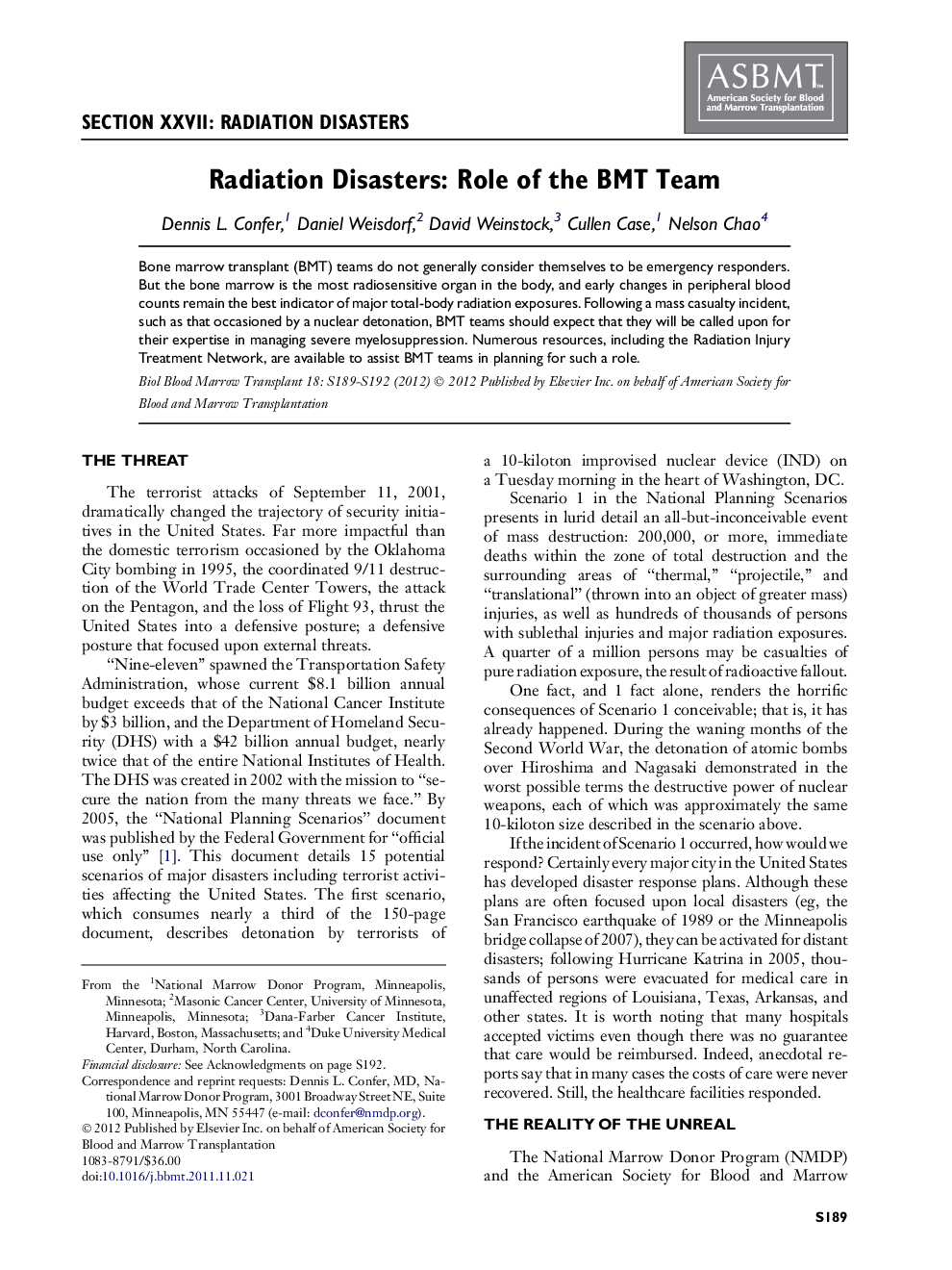| Article ID | Journal | Published Year | Pages | File Type |
|---|---|---|---|---|
| 2103764 | Biology of Blood and Marrow Transplantation | 2012 | 4 Pages |
Abstract
Bone marrow transplant (BMT) teams do not generally consider themselves to be emergency responders. But the bone marrow is the most radiosensitive organ in the body, and early changes in peripheral blood counts remain the best indicator of major total-body radiation exposures. Following a mass casualty incident, such as that occasioned by a nuclear detonation, BMT teams should expect that they will be called upon for their expertise in managing severe myelosuppression. Numerous resources, including the Radiation Injury Treatment Network, are available to assist BMT teams in planning for such a role.
Related Topics
Life Sciences
Biochemistry, Genetics and Molecular Biology
Cancer Research
Authors
Dennis L. Confer, Daniel Weisdorf, David Weinstock, Cullen Case, Nelson Chao,
